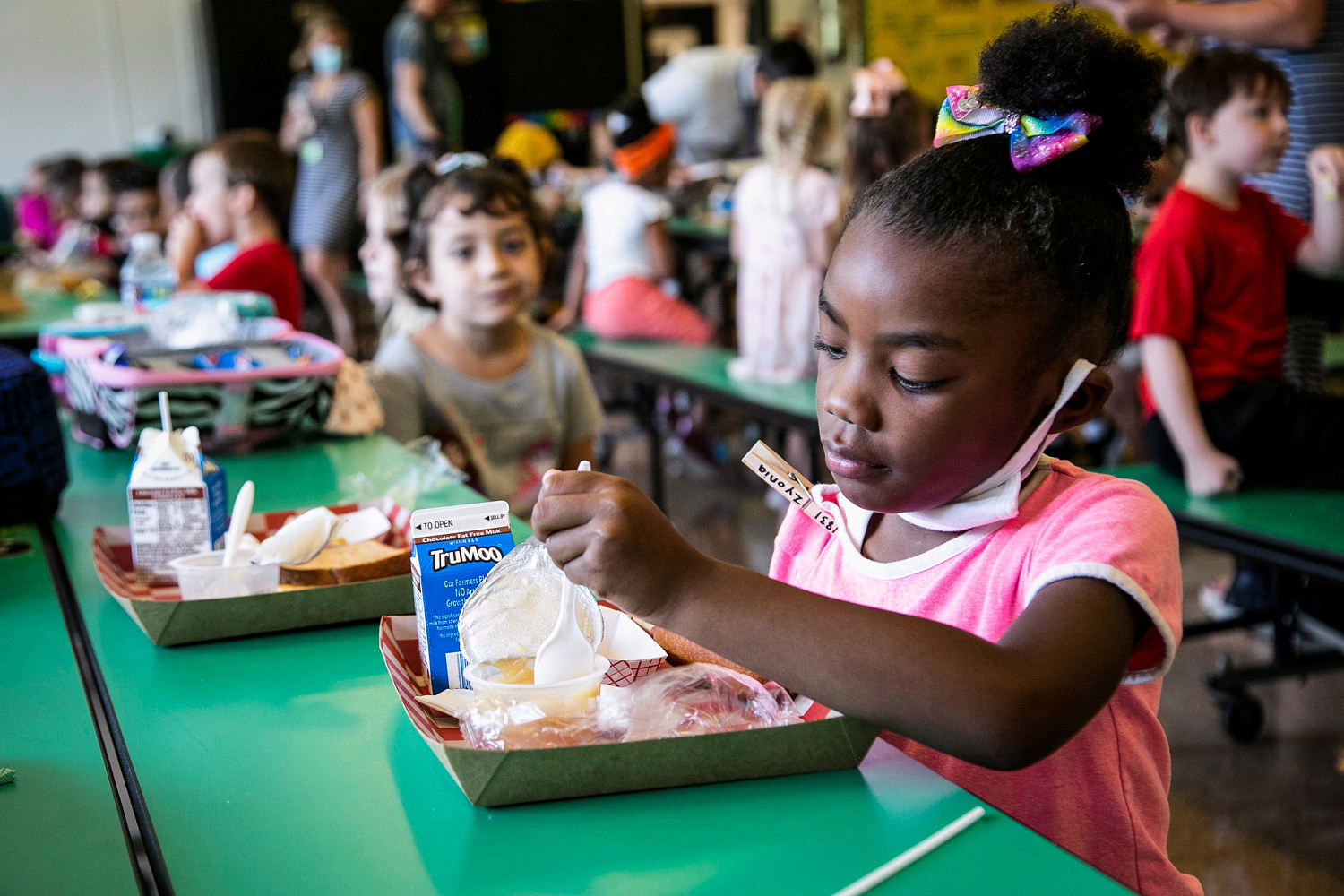Report on Educator Preparedness and its Alignment with Sustainable Development Goals
Advancing SDG 4: Quality Education
Educator efforts prior to the academic year are fundamental to achieving Sustainable Development Goal 4 (SDG 4), which aims to ensure inclusive and equitable quality education and promote lifelong learning opportunities for all. An analysis of pre-term classroom preparation at Kinder Elementary School reveals direct contributions to several SDG 4 targets.
- Creation of Optimal Learning Environments: Teachers dedicate significant off-contract time to structuring classrooms. This commitment to creating a “perfect learning environment” is a primary driver in delivering quality education (Target 4.1).
- Fostering Engagement: Educator Monica Courville’s stated goal is to instill a love of learning in students by demonstrating its enjoyable aspects. This approach directly supports the “quality” component of SDG 4 by increasing student engagement and retention.
- Promoting Foundational Literacy and Numeracy: The establishment of specific classroom zones, such as a themed reading corner, directly supports Target 4.6 (ensure that all youth and a substantial proportion of adults, both men and women, achieve literacy and numeracy). The emphasis on mathematics instruction further reinforces this objective.
- Developing Effective Learning Environments: The meticulous planning of classroom infrastructure, from desk arrangement to activity preparation, contributes to building and upgrading education facilities that are child, disability and gender sensitive and provide safe, non-violent, inclusive and effective learning environments for all (Target 4.a).
Fostering Inclusive and Equitable Classrooms (SDG 5 & SDG 10)
Classroom preparation strategies are instrumental in promoting social inclusion and equality, aligning with SDG 5 (Gender Equality) and SDG 10 (Reduced Inequalities). The classroom serves as a primary environment for modeling and instilling principles of equity.
- Facilitating Collaborative Learning: The strategic arrangement of desks for group projects fosters teamwork and peer-to-peer learning. This method de-emphasizes individual competition and promotes collaborative problem-solving, a key skill for building inclusive societies.
- Ensuring Social Inclusion: The careful consideration of where each child will sit is a deliberate action to create a balanced and supportive social dynamic. This practice helps to reduce inequalities within the classroom and ensures that the learning environment is welcoming to all students, regardless of background.
- Building Empathy and Emotional Intelligence: The use of literature like ‘First Day Jitters’ serves a pedagogical purpose beyond literacy. It is a tool for social-emotional learning that normalizes anxiety and builds empathy among students, creating a psychologically safe space that supports the well-being of all learners.
The Role of Education in Building Strong Institutions and Sustainable Communities (SDG 16 & SDG 12)
The micro-society of the classroom is a building block for broader societal goals, including SDG 16 (Peace, Justice and Strong Institutions) and SDG 12 (Responsible Consumption and Production).
- The Classroom as a Foundational Institution: A well-organized and effectively managed classroom functions as a strong, inclusive institution at the micro-level. It is here that students first learn principles of order, collaboration, and mutual respect, which are foundational for peaceful and just societies.
- Community Partnership and Responsible Consumption: The appeal for parental support in providing school supplies highlights a partnership model for educational success. It underscores the concept of shared responsibility and can be framed as a community-level practice of responsible consumption, ensuring that resources are pooled and utilized effectively for the common good of educating the next generation.
1. Which SDGs are addressed or connected to the issues highlighted in the article?
SDG 4: Quality Education
- The entire article is centered on the theme of education. It focuses on a first-grade teacher, Monica Courville, at Kinder Elementary School preparing her classroom for the upcoming school year.
- It highlights the importance of creating a positive and effective learning environment to foster a love for learning in young children, which is the core mission of SDG 4. The teacher’s statement, “I love learning personally, and I want to bring that back to kids because I feel like so many kids don’t love learning and they don’t realize how fun it can actually be,” directly aligns with the goal of providing quality education.
2. What specific targets under those SDGs can be identified based on the article’s content?
-
Target 4.1: By 2030, ensure that all girls and boys complete free, equitable and quality primary and secondary education leading to relevant and effective learning outcomes.
- The article focuses on a first-grade teacher preparing for her students. First grade is a critical part of primary education. The teacher’s efforts to create an engaging classroom are aimed at ensuring her students have a quality educational experience from the start, which is foundational to achieving effective learning outcomes in reading and mathematics.
-
Target 4.a: Build and upgrade education facilities that are child, disability and gender sensitive and provide safe, non-violent, inclusive and effective learning environments for all.
- The article explicitly details the teacher’s efforts to create an “effective learning environment.” Specific examples include “structuring desks for group projects” to encourage collaborative learning and setting up a dedicated “reading corner” to promote literacy. These actions are direct examples of building an inclusive and effective classroom.
-
Target 4.c: By 2030, substantially increase the supply of qualified teachers, including through international cooperation for teacher training in developing countries, especially least developed countries and small island developing States.
- The article showcases the dedication and professionalism of a teacher. Monica Courville is presented as a qualified and passionate educator who views teaching as “a calling” and spends her personal time preparing. While the article does not discuss increasing the *supply* of teachers, it highlights the critical role that a single, qualified, and motivated teacher plays in delivering quality education, which is the ultimate goal of this target.
3. Are there any indicators mentioned or implied in the article that can be used to measure progress towards the identified targets?
-
Implied Indicator for Target 4.1: Focus on foundational learning outcomes.
- The official indicator (4.1.1) measures proficiency in reading and mathematics. The article implies a focus on these areas. The teacher sets up a “reading corner” and uses a specific book, “First Day Jitters,” to engage students in reading from day one. She also explicitly states that “math is her favorite to teach.” These actions point to a direct effort to improve learning outcomes in foundational literacy and numeracy.
-
Implied Indicator for Target 4.a: Existence of a child-friendly and effective learning environment.
- The official indicator (4.a.1) lists school amenities. While the article doesn’t provide a checklist of facilities, it provides qualitative evidence of an effective learning environment. The descriptions of “structuring desks for group projects” and creating a themed “reading corner” serve as tangible examples of a school/classroom being set up to be an effective and inclusive learning space for children.
-
Implied Indicator for Target 4.c: Presence of a trained and motivated teacher.
- The official indicator (4.c.1) measures the proportion of teachers with minimum required training. The article portrays Monica Courville as a dedicated professional who meticulously plans her classroom and curriculum. Her statement that “teaching is a calling” and her extensive preparation during the summer break imply she is a motivated and qualified educator, representing the type of teacher this indicator aims to quantify.
4. Table of SDGs, Targets, and Indicators
| SDGs | Targets | Indicators (Identified or Implied in the Article) |
|---|---|---|
| SDG 4: Quality Education | Target 4.1: Ensure all children complete quality primary education leading to effective learning outcomes. | The teacher’s focus on making learning fun and her specific preparations for teaching reading (reading corner) and math (her favorite subject to teach). |
| SDG 4: Quality Education | Target 4.a: Build and upgrade education facilities to provide effective learning environments. | The creation of a “perfect learning environment” through specific actions like “structuring desks for group projects” and setting up a themed “reading corner.” |
| SDG 4: Quality Education | Target 4.c: Increase the supply of qualified teachers. | The article’s portrayal of a dedicated, professional, and motivated teacher (“teaching is a calling”) who spends her own time preparing, representing the quality standard for educators. |
Source: kplctv.com







